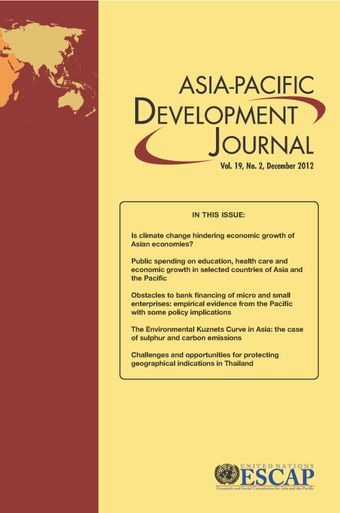-
Public spending on education, health care and economic growth in selected countries of Asia and the Pacific
- Source: Asia-Pacific Development Journal, Volume 19, Issue 2, Apr 2013, p. 19 - 48
-
- 15 Apr 2013
Abstract
In this paper the role of public spending on the education and health sectors is examined with regard to promoting the gross domestic product (GDP) of 12 countries in Asia and the Pacific over the last three decades. In six of those countries, namely Bangladesh, Kiribati, Malaysia, Maldives, the Philippines and the Republic of Korea, Johansen cointegration tests confirmed the existence of cointegrating relations. In the remaining countries, namely Fiji, Nepal, Singapore, Sri Lanka, Tonga and Vanuatu, cointegrating relations were absent. The causal impact of education and health-care spending on GDP was further examined in the study. Education spending was found to have raised GDP in Bangladesh, Fiji, Kiribati, Maldives, Nepal, Singapore, Sri Lanka, Tonga and Vanuatu. On the other hand, health-care spending contributed to GDP growth in Bangladesh, Nepal, the Philippines, Singapore and Sri Lanka. In the Philippines spending on education had a negative impact on GDP, while in Kiribati, Maldives and Vanuatu, the impact of health-care spending on GDP was found to be negative. In the case of Malaysia and the Republic of Korea, neither education spending nor health-care spending exhibited an appreciable impact on GDP. It was also found that the gestation lag of education spending was longer than that of health-care spending.
© United Nations





